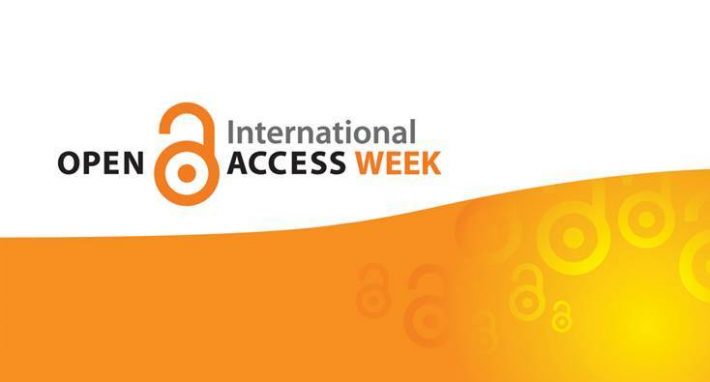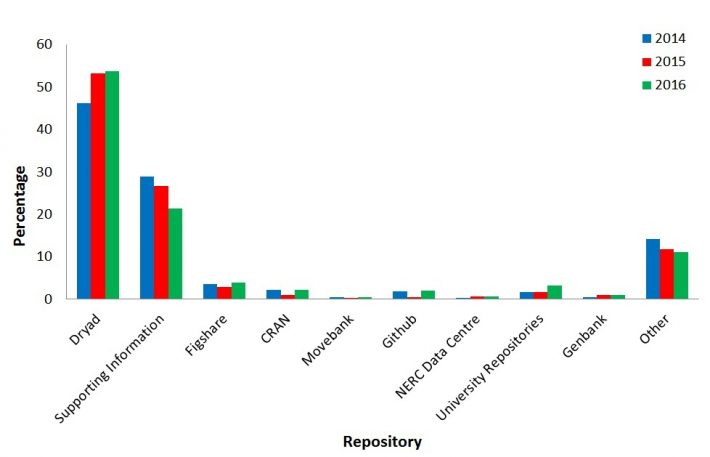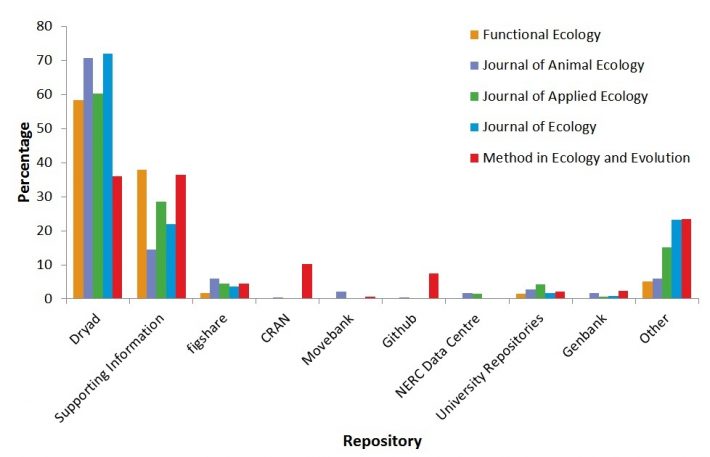Open Data in the British Ecological Society Journals

At the beginning of Open Access week, Alice discussed how articles published in the BES journals can be made more accessible and discoverable, and what Open Access (OA) options are available to authors of papers published in BES journals. The BES Journals are hybrid journals (publishing both subscription and OA content) but our data archiving policy means that the underlying data supporting the results in the papers is always publicly accessible. One reason that we mandate the archiving of data is to encourage data reuse, and as this links with the theme for Open Access week of ‘Open in action’ I thought I’d take a look at the trends in data archiving across the BES journals.
At the BES we believe that data are important products of the scientific enterprise, and they should be preserved and usable for the future, as such as a condition for publication all data and/or code supporting the results of papers in our journals must be archived in an appropriate public archive. The BES journals have been mandating the archiving of data since January 2014 so after almost three years, we are seeing some trends emerging.
Our authors use a number of different archives; however, as we are integrated with Dryad, this is by far the most commonly used archive with 52% of authors storing their data there. As part of the integration the BES covers all the costs associated with archiving in Dryad up to 20GB of data. Other repositories include figshare (3.4%), Github (1.3%) a variety of university-based repositories (2.2%), NERC Data Centres (0.6%), Movebank (0.4%), GenBank (0.9%), CRAN (1.7%) and the remaining 12% use other archives. A quarter of our authors use online Supporting Information, although we strongly recommend using a recognized repository for data archiving. The reasons for this are that data are then citable, searchable and more discoverable. In addition, if a repository is used that issues a DOI, then both the paper and the data are citable.
Changes over time
Since we introduced our policy 3 years ago we have seen archiving patterns begin to change (figure 1): the use of Dryad has increased while the use of Supporting Information is starting to fall. There has been a small increase in the use of university repositories which is interesting and we would be keen to know why this is.

Differences between the journals
As our journals cover different areas of ecology we see slightly different patterns in data archiving (figure 2). Methods in Ecology and Evolution has the most distinctive archiving patterns compared to the other journals with many authors using archives such as CRAN and Github and the lowest use of Dryad, reflecting the methodological nature of the papers published. We always encourage authors to archive their data in the place that is most useful to the ecological community so it is great to see the diversity of archives used and it is good to see discipline specific archives such as Movebank and Genbank being used as this allows the data to reach researchers in relevant fields.

Looking to the future
We hope to see the increasing reuse of data sets in new and innovative ways and hopefully new collaborations will be formed though the reuse of data. We will continue to support data archiving at the BES and to encourage authors to use archives that are most appropriate to the community that could use the data in the future.
Like what we stand for?
Support our mission and help develop the next generation of ecologists by donating to the British Ecological Society.